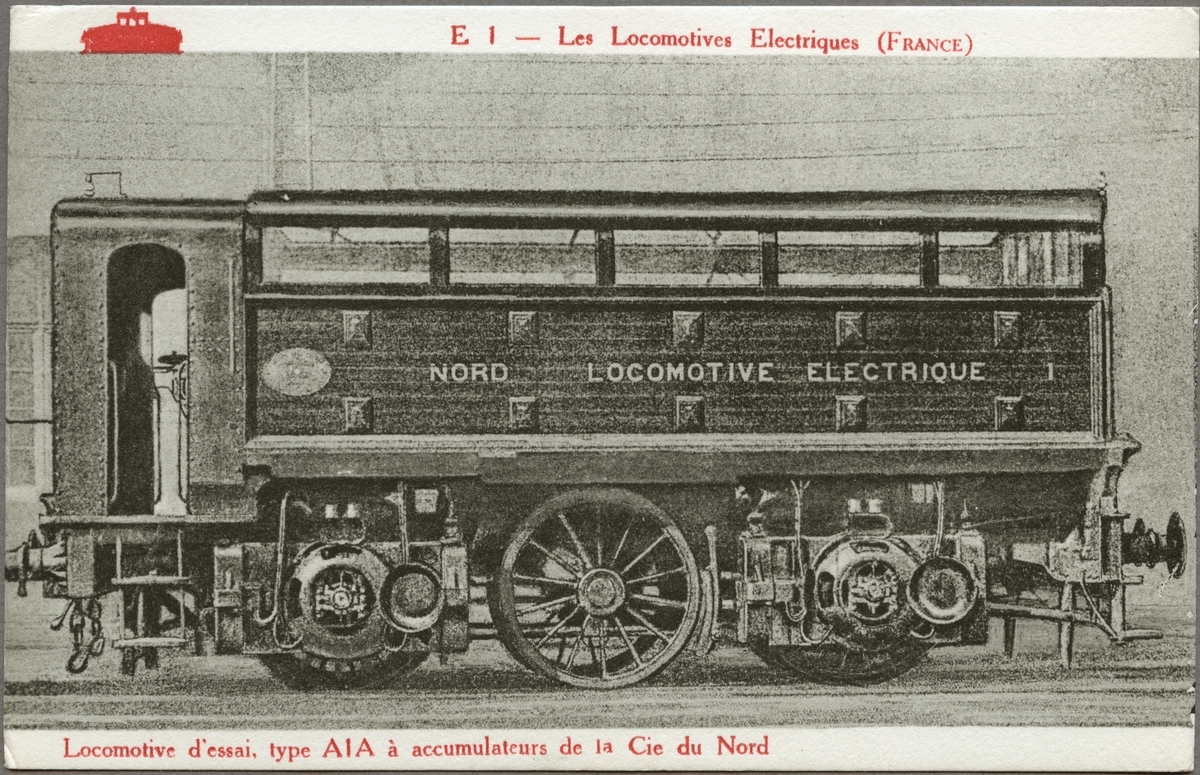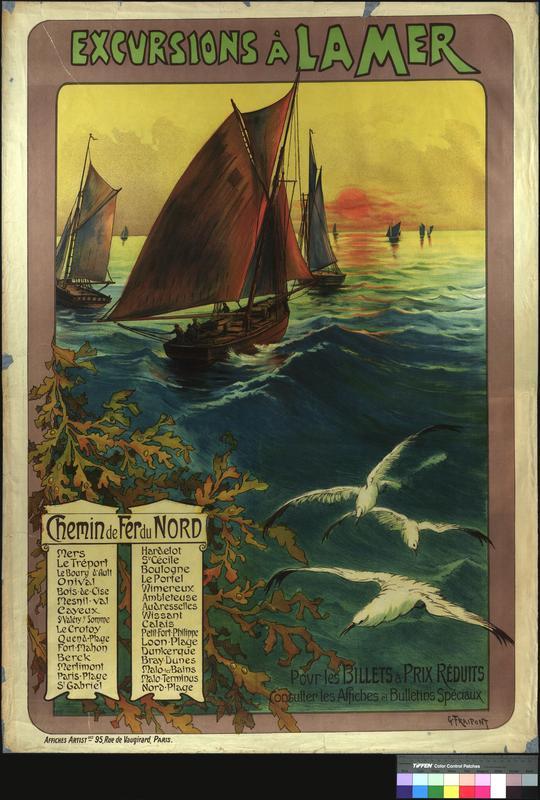Commercial Art: Travel Posters in Special Collections
Paris-"Trips to the Sea"

A photo of Gustav(e) Fraipont an artist and the creator of the lithographic poster Excursions à la Mer.
Gustave Fraipont or Gustav (1849-1923) was first born in Belgium and later became a naturalized French citizen. A professor, sculptor, painter, author, illustrator, and poster designer, Fraipont helped to shape the art world and transit experience: “He painted numerous posters for railway companies, including Chemins de Fer de l'Ouest and Compagnie des Chemins de Fer du Nord, as well as official documents and paper securities. His poster Pierrefonds, North company was reproduced in the magazine Les Maîtres de l'Affiche (1895–1900).”[1] He also contributed to many newspapers and magazines, such as French and Paris Courier. In 1905, he was appointed Navy painter and was commissioned to paint the destruction caused by the Great War after the Central Powers were defeated.

Builders: Company workshops, 1893. Photo of test locomotive, type A1A with accumulators of the Cie du Nord
At the turn of the 19th century, the Gilded Age was at its peak, manufacturing companies were booming, and the idea of the middle-class began to take on a different definition. With a booming economy, many of the wealthy upper-class took advantage of trains and steamboats to take grand vacations either abroad or in their own region.
Chemins de Fer du Nord—otherwise known as Compagnie des Chemins de Fer du Nord— was a privately owned railway with more than 2,362 miles of the track: “Founded in 1845 to operate the main artery from Paris to the Belgian border built by the State, the Compagnie du Chemins de Fer du Nord was from its inception a complete and homogeneous network.”[2] Further, the exploitation of this network led it to be one of the greatest networks within France: “Later on, in 1875, Compagnie du chemin de fer du Nord would make a specific agreement with the Société du chemin de fer de Chimay to gain control over this railway too. As a result, Compagnie du chemin de fer du Nord held a large stake in Belgian railways, known as ‘Nord Belge.’ Nord Belge, as the Belgian part was called, was a real “cash cow’ for the Compagnie du Chemin de fer du Nord, partly due to the low Belgian wages. During the period from 1911 to 1913, Nord Belge would account for 35 percent of the profits of the Compagnie du Chemin de Fer du Nord, although it had only 8.53 percent of all exploitation income.”[3] Further, it is also the company in which Fraipont was commissioned to paint both Chateau de Chantilly (ca. 1895) and the Excursions à la Mer (ca. 1898).

"Trips to the Sea," along with a list of places that you can set sail or dock at. Poster from the MU Ellis special collections.
In Fraipont's, Excursions à la Mer (ca. 1895) we are faced with a wide seascape, organic flowing lines, and natural elements like seagulls looking as if they are about to fly from the poster. The font of the poster gives it the illusion that it was crafted by hand. It is very ornate and written in calligraphy. The poster is backed on linen—as most lithographic posters are—and is meant to make the audience question further about the sea excursions offered in France. At the bottom of the poster, it reads, “Buy Tickets at Reduced Prices, Consult the Posters and Special Bulletins.” While doing research there were multiple other posters found with information on these seaside excursions. People could take the train from the inner city out to the seaside and from there go sailing or just enjoy a holiday at the sea.
[1] Contributors to Wikimedia projects. 2011. “Gustave Fraipont - Wikipedia.” Wikipedia, the Free Encyclopedia. Wikimedia Foundation, Inc. February 23, 2011. https://en.wikipedia.org/wiki/Gustave_Fraipont.
[2] Nilsen, M. Railways and the Western European Capitals: Studies of Implantation in London, Paris, ... Berlin, and Brussels. Place of Publication Not Identified: Palgrave Macmillan, 2016.
[3] "Compagnie Du Nord - Belge." Wikipedia. February 21, 2020. Accessed December 02, 2020. https://fr.wikipedia.org/wiki/Compagnie_du_Nord_-_Belge.